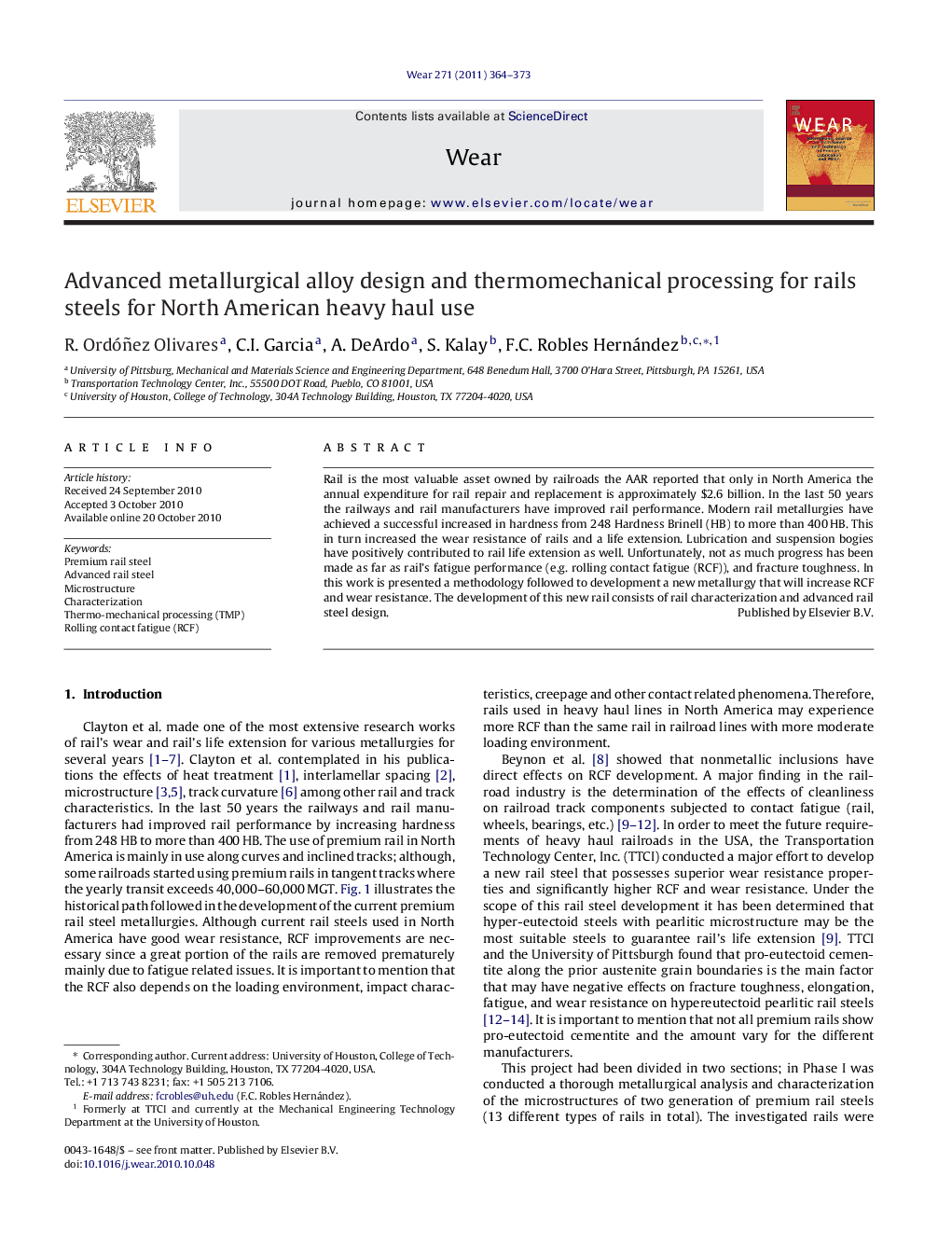| Article ID | Journal | Published Year | Pages | File Type |
|---|---|---|---|---|
| 618290 | Wear | 2011 | 10 Pages |
Abstract
ⶠIn the last 50 years the railways and rail manufacturers have improved rail performance, by increasing hardness from 248 Hardness Brinell (HB) to more than 400 HB resulting in better wear resistance of rails and a life extension. ⶠIn this work is presented a methodology followed to develop a new metallurgy to increase RCF and wear resistance on a new rail steel design based on extensive characterization of rails and advanced rail steel design. ⶠPro-eutectoid cementite at the prior austenite grain boundaries seems to be a major contributor to the development of RCF in the railhead. ⶠInclusions has been found to aggravate the problem by allowing the development of secondary cracks in the rail. ⶠAdvanced alloy design and TMP methods allowed the development of rail steel with limited to non pro-eutectoid cementite and ultra low levels of inclusions. The level of inclusions was achieved through a tight control of the rail chemistry (S and P) and vacuum degassing.
Related Topics
Physical Sciences and Engineering
Chemical Engineering
Colloid and Surface Chemistry
Authors
R. Ordóñez Olivares, C.I. Garcia, A. DeArdo, S. Kalay, F.C. Robles Hernández,
